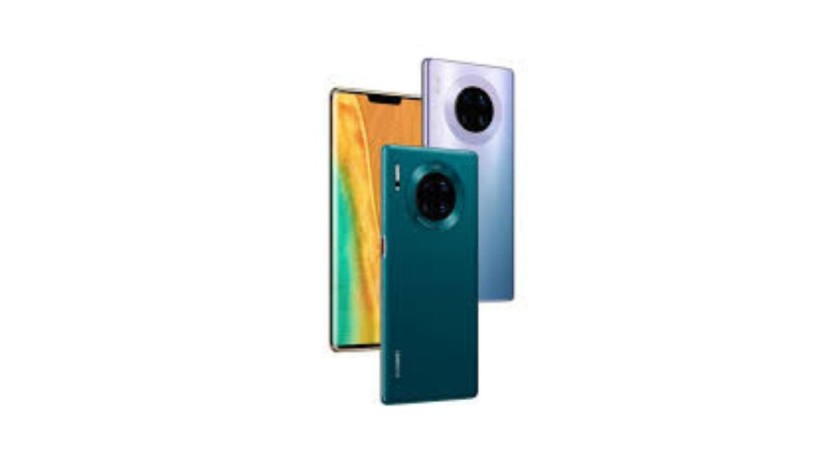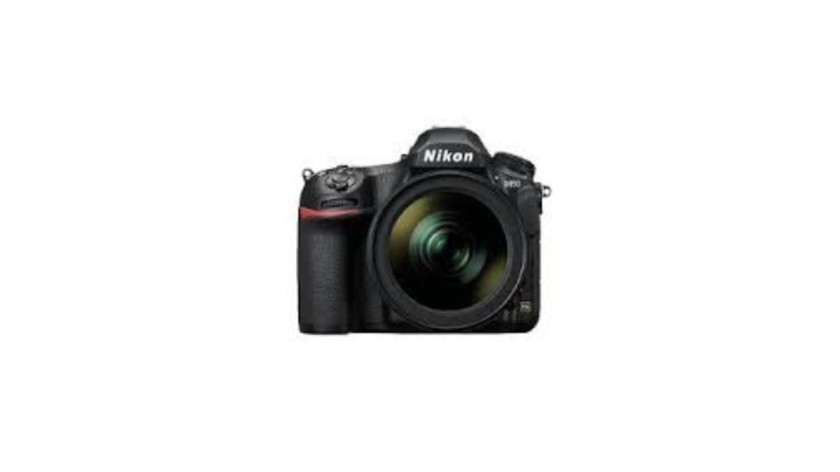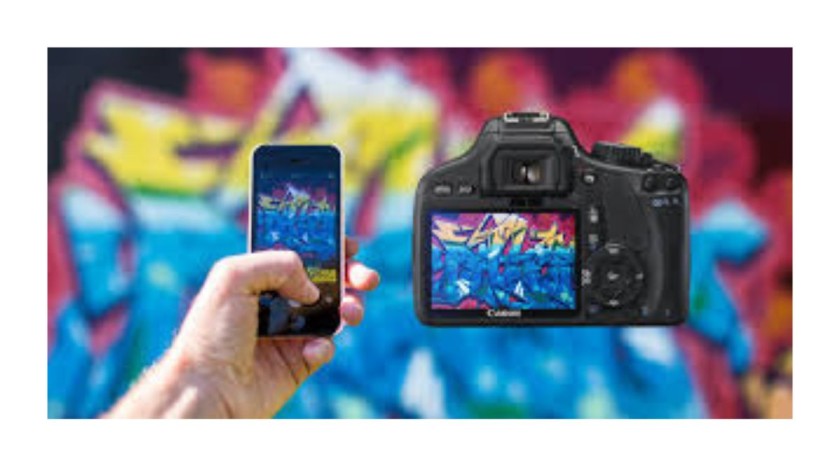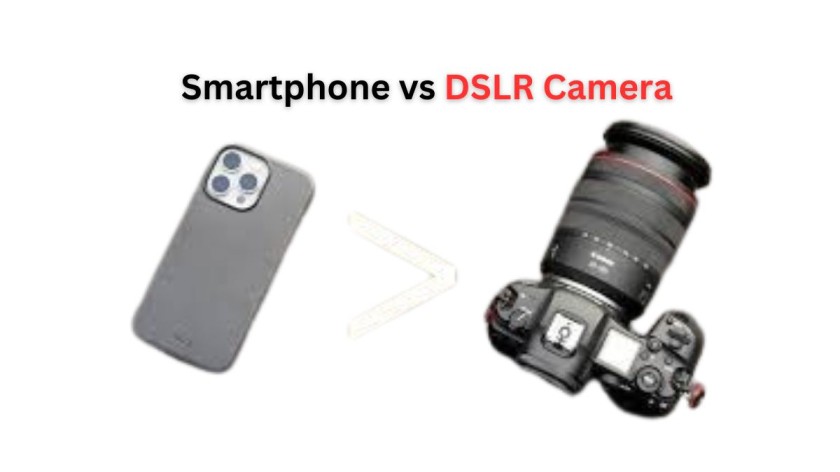Table of Contents
Introduction:
In today’s digital age, photography has become an integral part of our lives, driven by the desire to capture and share moments with unprecedented ease. The market is flooded with a multitude of camera options, catering to a diverse range of photography enthusiasts, from casual snappers to professional photographers. Among these, two of the most popular and accessible choices are smartphone cameras and DSLR (Digital Single-Lens Reflex) cameras.
Smartphone cameras have revolutionized the way we take photos, offering impressive technology packed into devices we carry with us everywhere. With each new generation, these cameras boast higher megapixel counts, multiple lenses, and advanced software features that enhance image quality and versatility. They are designed to be user-friendly, allowing even beginners to capture stunning photos with minimal effort.
On the other hand, DSLR cameras have long been the gold standard for serious photographers and professionals. Renowned for their superior image quality, manual controls, and adaptability, DSLRs provide unmatched creative freedom. They feature large sensors and the ability to interchange lenses, making them ideal for a wide range of photography styles, from portraits to landscapes to action shots.
Choosing between a smartphone camera and a DSLR camera is not a straightforward decision. Each option comes with its unique set of advantages and disadvantages, making the choice highly dependent on your specific needs, preferences, and photography goals. Factors such as convenience, image quality, versatility, and budget play crucial roles in determining which type of camera will best suit you.
This article aims to delve into the key differences between smartphone cameras and DSLR cameras. We will explore their respective strengths and weaknesses, compare their performance in various photography scenarios, and provide insights to help you make an informed decision. Whether you are a budding photographer looking to capture everyday moments or an enthusiast seeking to take your skills to the next level, understanding these differences will guide you in choosing the right camera for your needs.
The Evolution of Smartphone Cameras:

Smartphone cameras have come a long way since their inception. Modern smartphones are equipped with multiple lenses, high megapixel counts, and advanced software that enhances image quality. Here are some key features of smartphone cameras:
- Portability: Smartphones are compact and always on hand, making them perfect for spontaneous photography.
- Ease of Use: With intuitive interfaces and automatic settings, smartphones make it easy for anyone to take good photos.
- Software Enhancements: Features like HDR, portrait mode, and night mode use advanced algorithms to improve photo quality.
- Connectivity: Instantly share your photos on social media or back them up to the cloud with ease.
The Power of DSLR Cameras:

DSLR (Digital Single-Lens Reflex) cameras have long been the choice of professional photographers. They offer superior image quality and greater control over photographic settings. Here are some of the standout features of DSLR cameras:
- Image Quality: Larger sensors and high-quality lenses result in better image resolution and clarity.
- Manual Control: DSLRs offer full control over settings like aperture, shutter speed, and ISO, allowing for creative freedom.
- Interchangeable Lenses: Choose from a wide range of lenses to suit different types of photography, from macro to telephoto.
- Durability: Built to withstand various environmental conditions, making them ideal for outdoor and action photography.
Points in Which is Better for You in Smartphone and DSLR Camera:
Comparing Image Quality:

When it comes to image quality, DSLR cameras generally have the upper hand due to their larger sensors and superior optics. However, modern smartphones are closing the gap with advanced computational photography techniques. Here are some aspects to consider:
- Low Light Performance: DSLRs excel in low light conditions due to their larger sensors. Smartphones are improving with features like night mode but still lag.
- Dynamic Range: DSLRs typically capture a broader range of tones and colors, resulting in more detailed images.
- Depth of Field: Achieving a natural bokeh effect is easier with DSLRs, although smartphones simulate this with software.
Convenience and Portability:
When deciding between a smartphone and a DSLR, many people consider the trade-offs between portability and functionality. Smartphones are compact, easily portable, and serve as versatile all-in-one devices. On the other hand, DSLRs, although larger and less portable, are favored by those who value superior image quality and desire extensive control over their creative output.
Cost Considerations:
- Initial Investment: Smartphones can be expensive, but they serve multiple functions beyond photography. DSLRs require a more significant initial investment, especially when factoring in lenses and accessories.
- Upgrades and Maintenance: Smartphone upgrades are frequent and often tied to mobile contracts. DSLRs have a longer lifespan but require occasional maintenance and lens purchases.
Conclusion: Which is Better for You?
The decision between a smartphone and a DSLR camera depends on your needs and priorities. If you value convenience, portability, and ease of use, a smartphone camera is a great choice. However, if you seek the highest image quality, manual controls, and the flexibility of interchangeable lenses, a DSLR is worth the investment.
Ultimately, both types of cameras have their place in photography. Understanding their strengths and limitations will help you make an informed decision and enhance your photographic journey.
Read more- Exploring Different Tablet Operating Systems
FAQ-
What are the main differences between smartphone cameras and DSLR cameras?
The main differences lie in image quality, control, and versatility. DSLRs have larger sensors and offer manual control over settings like aperture and shutter speed, resulting in superior image quality and creative flexibility. Smartphones are more portable and user-friendly, and feature advanced software enhancements that make taking good photos easy.
Can smartphone cameras compete with DSLRs in terms of image quality?
While smartphone cameras have improved significantly and can produce high-quality images, DSLRs generally offer better image quality due to their larger sensors and high-quality lenses. DSLRs excel in low light conditions and provide better dynamic range and depth of field.
Which is better for low-light photography, a smartphone or a DSLR?
DSLRs are typically better for low-light photography because of their larger sensors, which can capture more light and detail. However, smartphones are improving with features like night mode, though they generally fall short compared to DSLRs in shallow light conditions.
Are smartphones easier to use than DSLRs?
Yes, smartphones are generally easier to use than DSLRs. They are designed for convenience, with automatic settings and user-friendly interfaces that make taking photos simple. DSLRs require more knowledge and skill to use effectively, particularly if you want to take full advantage of their manual settings.
What are the advantages of using a DSLR camera?
The advantages of a DSLR include superior image quality, full manual control over photographic settings, the ability to interchange lenses, and better performance in low-light conditions. DSLRs are also more durable and better suited for various types of photography, from action shots to detailed portraits.
What are the benefits of using a smartphone camera?
The benefits of a smartphone camera include its portability, ease of use, and advanced software features that enhance photo quality. Smartphones are always on hand, making them ideal for spontaneous photography. They also offer seamless connectivity for sharing photos on social media and cloud storage.
How does the cost of a smartphone compare to a DSLR camera?
Smartphones can be expensive, but they serve multiple functions beyond photography. DSLRs require a more significant initial investment, especially when factoring in lenses and accessories. Over time, upgrading a smartphone can also add to the cost, while DSLRs have a longer lifespan but may require occasional maintenance and lens purchases.
Is it necessary to have a DSLR camera for professional photography?
While many professional photographers prefer DSLRs for their image quality and control, it is not strictly necessary to have one for professional photography. Some professionals use high-end smartphone cameras, especially for social media content and casual shoots. However, for certain types of photography, such as studio work or high-detail shots, a DSLR is often preferred.
Can I achieve professional-looking photos with a smartphone camera?
Yes, you can achieve professional-looking photos with a smartphone camera, especially with the latest models that offer advanced features and high megapixel counts. Understanding composition, and lighting, and using the right editing tools can significantly enhance the quality of your smartphone photos.
Which camera is better for travel photography, a smartphone or a DSLR?
This depends on your priorities. If you value convenience, portability, and quick sharing, a smartphone is ideal for travel photography. If you prioritize image quality and versatility, especially for capturing diverse scenes and conditions, a DSLR may be better. Many travelers opt to carry both to take advantage of each camera’s strengths.

